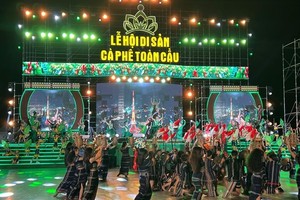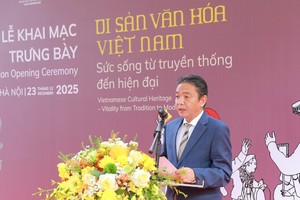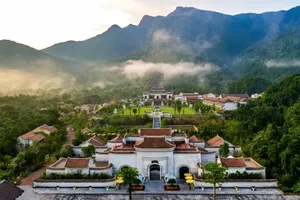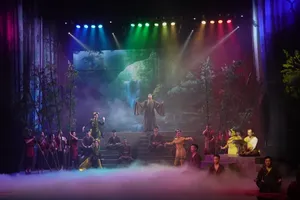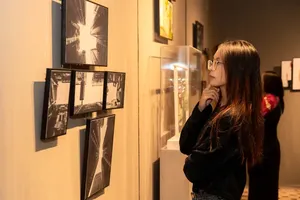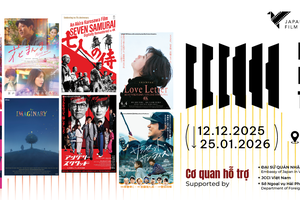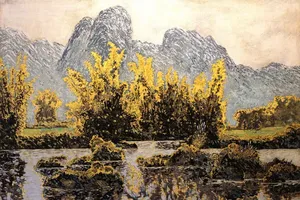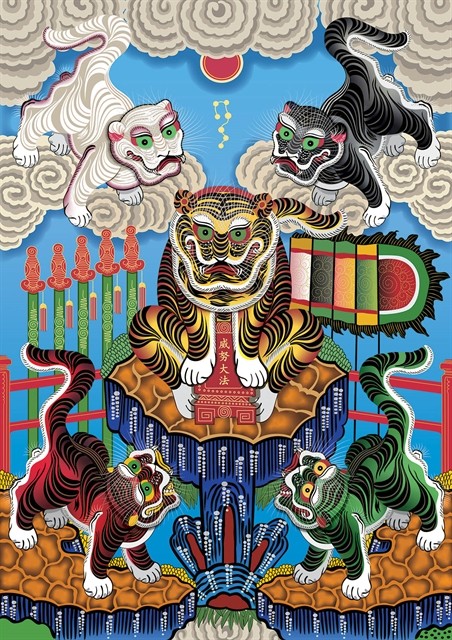 The redesigned Five Tigers painting is based on the original work of the same name. (Photo courtesy of the artist)
The redesigned Five Tigers painting is based on the original work of the same name. (Photo courtesy of the artist)
Nguyen Minh Ngoc, 24, graduated in Graphic Design at Hanoi University of Industrial Fine Arts. Ever since she was a student, she has seen many graphic products from numerous countries such as China, South Korea and Japan, which spread their national culture to the world.
She has asked herself why Vietnamese culture, with thousands of years of history and unique images and art forms, still has not been able to use them in graphics.
With these concerns, the young artist spent a lot of time studying Vietnamese culture and folk painting.
She came up with the idea of creating industrial art with folklore elements for use in contemporary life.
Launched this Lunar New Year, Ngoc’s tiger painting series quickly became a highlight at the Khi Phach Uy Manh exhibition and surprised the public with its unique and bold traditional spirit.
“Previously, Hang Trong folk paintings were only sold to mandarins and intellectuals because of their sophistication and detail. I can see the diversity and richness in the subject, shape, and layout of the paintings, and all carry the essence of Vietnamese culture,” she said.
“So, I want to bring the characteristics of Hang Trong painting into commercial graphic publications, so its beauty can be accessed by many people, in a simple and understandable way.”
It took more than a year for the young female artist to come up with ideas and complete the paintings.
She said that a lack of references posed a big difficulty in the composition process.
“There are so few remaining documents; they are only found in books about Hang Trong paintings and works painted and restored by artist Le Dinh Nghien,” Ngoc said.
“Although I received a lot of support from the teachers and the Hanoi Heritage Club, for those who did not live in the golden age of painting and did not fully understand the meaning of the mythical stories in the paintings, my work still had many defects.”
She has asked herself why Vietnamese culture, with thousands of years of history and unique images and art forms, still has not been able to use them in graphics.
With these concerns, the young artist spent a lot of time studying Vietnamese culture and folk painting.
She came up with the idea of creating industrial art with folklore elements for use in contemporary life.
Launched this Lunar New Year, Ngoc’s tiger painting series quickly became a highlight at the Khi Phach Uy Manh exhibition and surprised the public with its unique and bold traditional spirit.
“Previously, Hang Trong folk paintings were only sold to mandarins and intellectuals because of their sophistication and detail. I can see the diversity and richness in the subject, shape, and layout of the paintings, and all carry the essence of Vietnamese culture,” she said.
“So, I want to bring the characteristics of Hang Trong painting into commercial graphic publications, so its beauty can be accessed by many people, in a simple and understandable way.”
It took more than a year for the young female artist to come up with ideas and complete the paintings.
She said that a lack of references posed a big difficulty in the composition process.
“There are so few remaining documents; they are only found in books about Hang Trong paintings and works painted and restored by artist Le Dinh Nghien,” Ngoc said.
“Although I received a lot of support from the teachers and the Hanoi Heritage Club, for those who did not live in the golden age of painting and did not fully understand the meaning of the mythical stories in the paintings, my work still had many defects.”
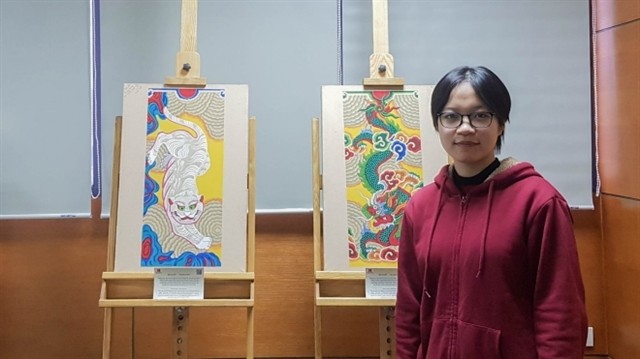 Minh Ngoc at the Khi Phach Uy Manh exhibition. (Photo courtesy of thethaovanhoa.vn)
Minh Ngoc at the Khi Phach Uy Manh exhibition. (Photo courtesy of thethaovanhoa.vn)
Hang Trong paintings have vivid colors that reflect the beauty and rich culture of the community where they originated. Their themes depict activities associated with Vietnamese culture such as weddings, festivals and worship. One of Hang Trong’s best loved images is "Ngu Ho" (The Five Tigers). As the Vietnamese believe that the tiger is a symbol of strength and power, they often hang paintings of tigers in front of their houses to ward off evil spirits and bad luck. Inspired by that, Ngoc decided to redesign The Five Tigers in her own style. The new work is one of the highlights of the series and is highly appreciated by experts and the public alike. Compared to the traditional Five Tigers painting, her painting is presented in a new way. The image of the five tigers is a "deviated" composition, different from the balanced layout of the originals. According to Ngoc, the beauty of the painting is that it shows many images that represent Vietnamese culture, including yin and yang, the five elements, beliefs of tiger worship, and many other aspects. “In addition to expressing the beauty of Vietnamese culture, the paintings carry expressions suitable for each season as well as typical color techniques of Hang Trong paintings and the gold-plated technique of the ancients,” she said. Ngoc believes that the most important thing in preserving traditional values is being able to bring them into contemporary life in a new way. “I think it is our duty as people living in today's modern society to bring heritage culture to life, to make old things more relevant to contemporary life,” she said. “The most important thing for culture not to become obsolete is that we can use such heritage in today's contemporary life through commercial products.”
